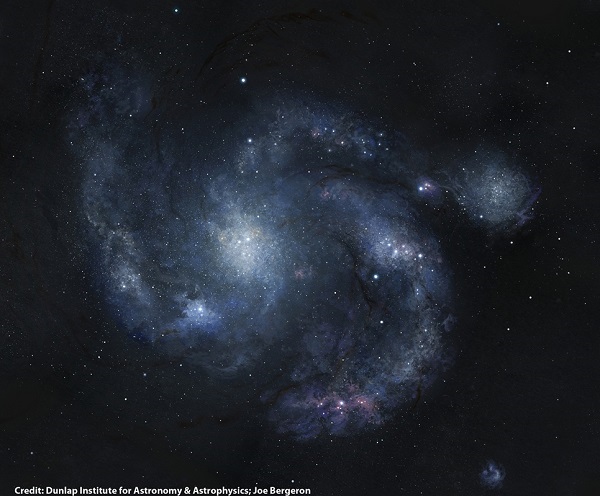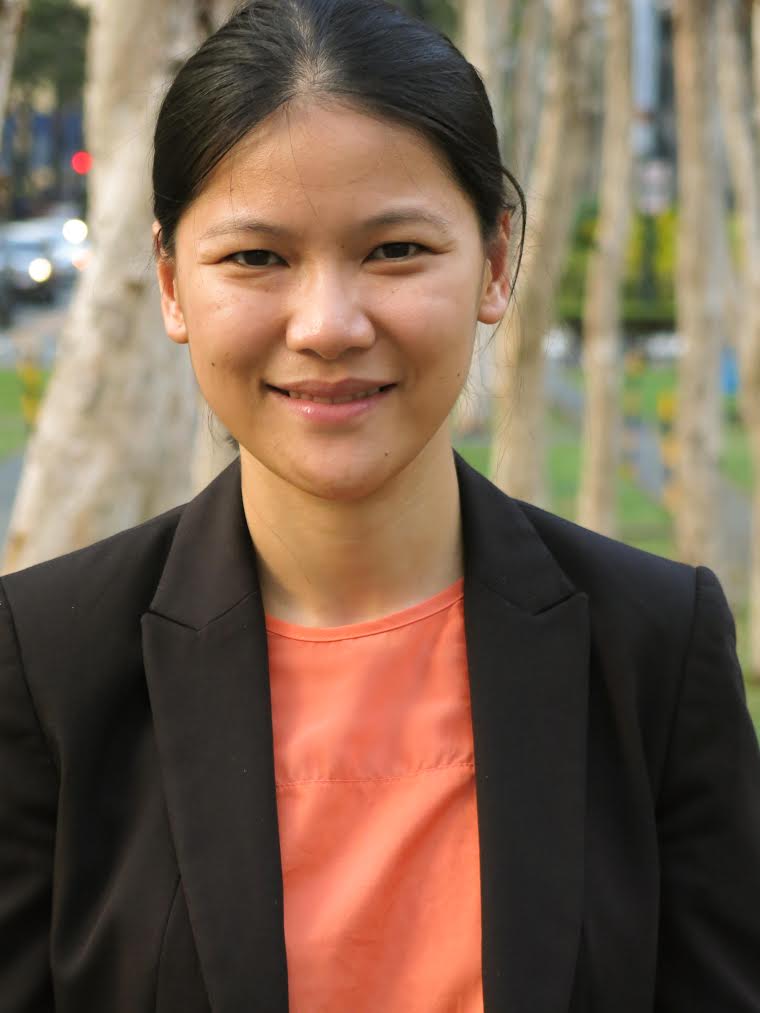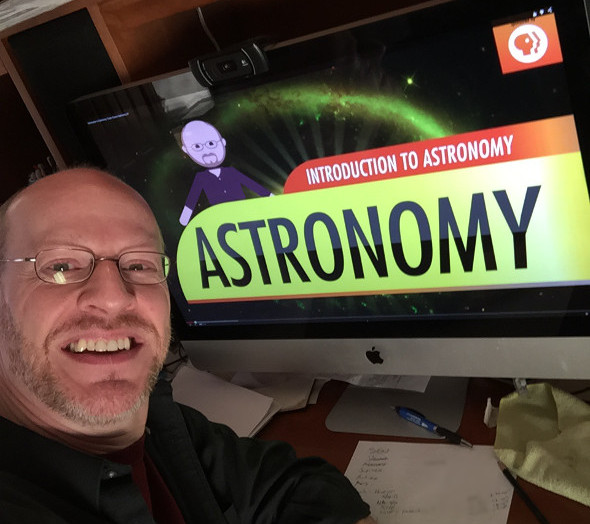Glitter Your Milky Way
- Details
- Category: AstroEDU Activity of the Day
April 3

Have you ever wondered where we are in our own galaxy, the Milky Way? "Glitter Your Milky Way" lets you get creative while learning the characteristics of the Milky Way and exploring the different types of galaxies.
Wondering about the Universe
- Details
- Category: GAM 2017 Blog
By Reina Reyes
"The most incomprehensible thing about the Universe is that it is comprehensible." Albert Einstein
How do we comprehend the Universe? How are astronomers and astrophysicists able to study its myriad of mysteries? Dark stars so dense that even light cannot escape. Explosions so energetic they outshine the whole galaxy. Tiny planets orbiting around double stars as in science fiction films. We humans have explored far beyond our earthly shores, and there is no end in sight.
We speak about "The Great Silence"-- it seems that no one is communicating with us from outer space-- but the truth is, the Universe is sending us messages, night and day. Astronomers have found ways to listen, to the light waves, radio waves, X-rays, cosmic rays, neutrinos, and most recently, gravitational waves, coming our way.
Our detectors welcome them warmly after what could be millions, or even billions, of light years traveled across the dark, empty expanse of space. We carefully record each precious photon, and put together a picture of where it came from, and how it came to make its way to us. Piece by piece-- diligently, playfully, cleverly, we rebuild the Universe.
With our telescopes, we participate in this Universe-listening and Universe-building endeavor. Observational astronomers specialize in capturing subtle messages from the skies and exploiting them for insights about the workings of Nature. Meanwhile, theoretical astrophysicists exploit the laws of Nature to create models to better understand and explain what we observe.
Together, theorists and observers weave a beautifully complex yet elegant understanding of astronomical phenomena, however strange and spectacular they may be. The Universe is full of mystery and wonder, but is also orderly and comprehensible, as Einstein marveled.
One can look up to the sky in awe, mouth agape, yet at the same time, listen with concentration-- telescope and computer in tow, brows furrowed and minds aglow. The Universe will speak to whoever will listen. Her invitation is wide open-- and up to us to take.
Where do we begin?
For countries like mine-- the Philippines-- that have only recently made nascent progress towards developing our national space science, technology, and industry, the question remains if we are ready to accept this cosmic invitation.
If we heed the call, we will have the unique opportunity to inspire the next generation of aspiring scientists, engineers, technologists, and technopreneurs-- and give them the opportunity to explore the wonders of the Universe and utilize the gifts she has to offer.
We have already taken the first steps on this long and challenging, yet ultimately fulfilling, journey to space. The first microsatellite of the Philippine Scientific Earth Observation Microsatellite Program, PHL-Microsat-1, was successfully launched in March last year. It was a flagship project of the national Department of Science and Technology (DOST) and the University of the Philippines, in partnership with Hokkaido University and Tohoku University of Japan. The satellite is also called Diwata-1, after a fairy-like deity in Philippine mythology. The second satellite, Diwata-2, is currently under development and scheduled to be launched next year.
In parallel, initiatives to establish a Space Research and Development Agenda to set forth space-based capabilities, including policy and research and development infrastructures, are gaining momentum-- with the ultimate objective of the establishment of our own national Space Agency. It is a promising sign to see these efforts pushed by the younger generation, with visionary leadership from my colleague and friend, Dr. Rogel Mari “Romar” Sese, as head of the DOST-funded National Space Development Program.
There is a long way to go, but also so much to look forward—and upward—to. So, as we have always said: Per aspera ad astra!
 Reina Reyes, Ph.D. is a data scientist and lecturer at Ateneo de Manila University and Rizal Technological University in Manila, Philippines. She obtained her doctorate degree in Astrophysics from Princeton University. For more, you may visit her webpage at: www.reinareyes.com.
Reina Reyes, Ph.D. is a data scientist and lecturer at Ateneo de Manila University and Rizal Technological University in Manila, Philippines. She obtained her doctorate degree in Astrophysics from Princeton University. For more, you may visit her webpage at: www.reinareyes.com.
Attribution Note: A slightly-different version of this article has been published in the Philippine Panorama on February 26, 2017.
Crash Course Astronomy by Phil Plait
- Details
- Category: Astronomy for All

Phil Plait (AKA the Bad Astronomer) teaches you astronomy in a series of 47 videos with English captions (and many in other languages too). Welcome to the first episode of Crash Course Astronomy. Your host for this intergalactic adventure is the Bad Astronomer himself, Phil Plait. We begin with answering a question: "What is astronomy?"
Phil Plait writes Slate’s Bad Astronomy blog and is an astronomer, public speaker, science evangelizer, and author of Death From the Skies!
Lunar Day
- Details
- Category: AstroEDU Activity of the Day
April 2
 The Moon
The Moon
credit: Gregory H. Revera
Two children act as the Moon and the Earth. By holding hands and spinning around they mimic the tidal locking of the Moon. They note that the Moon always keeps the same face towards Earth.
The Celestial Experience
- Details
- Category: GAM 2017 Blog
By Monica Young
“Wow, the Moon is so big!”
I’ve invited friends over to see the so-called supermoon. I know that this particular full Moon isn’t noticeably bigger than any other month, but why not take advantage of the hype? I now have two five-year-olds, a two-year-old, and even a one-year-old out in the dark, all of them vying for turns at my telescope.
The hands-on experience is a far cry from my graduate school days, many of which were spent at a computer analyzing thousands of X-ray sources and examining their spectra. I pored over images from the XMM-Newton telescope, in which 58 gold-plated mirrors nestle inside each other like layers of an onion, each one doing its part to focus incoming X-rays. The photons the spacecraft captured told stories of an exotic universe.
In the sources I studied, a precious few X-rays had made their way to Earth from the hot, innermost regions of the gas disks around supermassive black holes — the last glow of material falling into the gravitational pit. For each source, I arranged those photons into a spectrum. A single spectrum of a faraway active galactic nucleus is like a cipher; it reveals very little about its source. But if you collect thousands of such spectra, they begin to tell a story about the relationship between the gas that feeds a black hole and the gas that escapes.
During graduate school, I mastered radiative processes and learned how quantum effects could reveal themselves in spectral lines. But I didn’t know the constellations. In fact, I struggled to learn the basic patterns of the stars on the fly, as I taught them during night labs to intro-level astronomy students. If I had ever told the students that I knew only a little more than them, they would have been surprised — surely an astronomer would have to know the stars?
Yet gazing up at the sky, while still very much in practice among the pros, seems to be a lesser part of the field’s future. As ever-bigger telescopes scan the sky and collect petabytes of data across the electromagnetic spectrum, the experience of professional astronomy has become more a matter of data analysis than data collection.
Is that a bad thing? Walt Whitman may think so, but I don’t. My favorite part of astronomy — and the part I miss the most now that I no longer do research for a living — was the analysis: that moment when the data begin to take shape and tell a visual story of the physics responsible for far-off happenings.
Still, as I stand shivering in the “mystical moist night-air” and talk with my kids and their friends about what they see on the Moon, their excitement is contagious. “It has lots of circles!” they cry, as they glimpse for the first time the craters that dot the lunar surface. Though I’m sure not going to get any “perfect silence” tonight, it’s nevertheless a good time for me to experience the sky with new eyes.
 Dr. Monica Young earned her Ph.D. researching the behavior of supermassive black holes in distant galaxies. In 2012, she joined the talented team at Sky & Telescope, where as Web Editor, she edits, writes, and commissions web news stories and magazine feature articles.
Dr. Monica Young earned her Ph.D. researching the behavior of supermassive black holes in distant galaxies. In 2012, she joined the talented team at Sky & Telescope, where as Web Editor, she edits, writes, and commissions web news stories and magazine feature articles.





